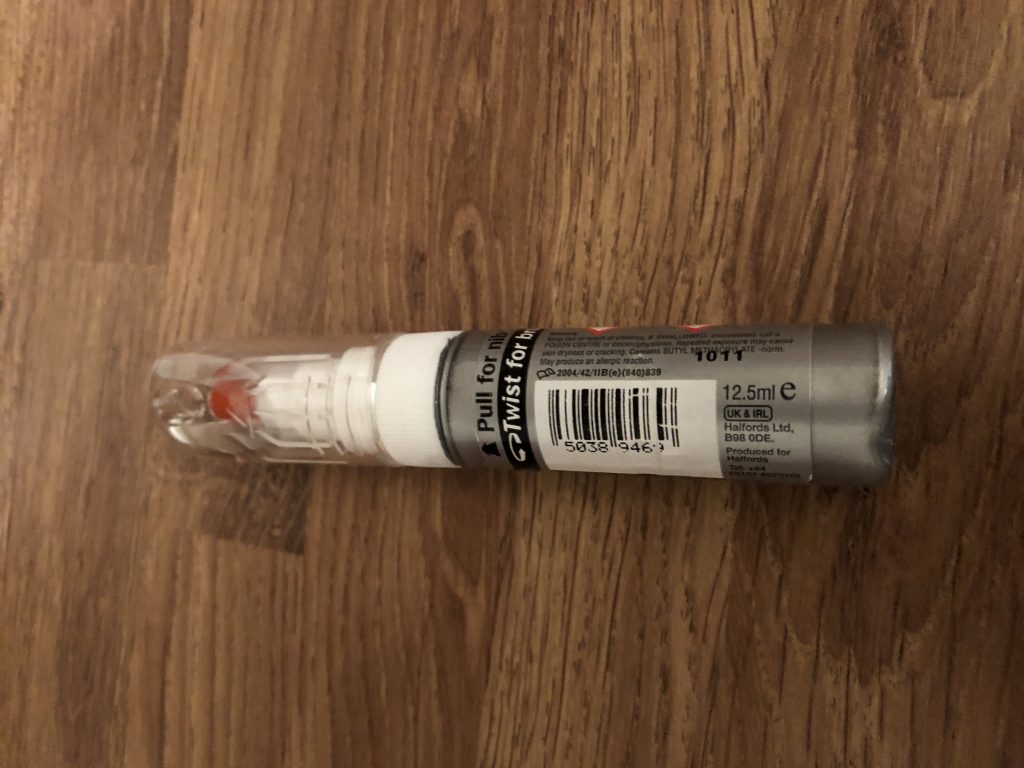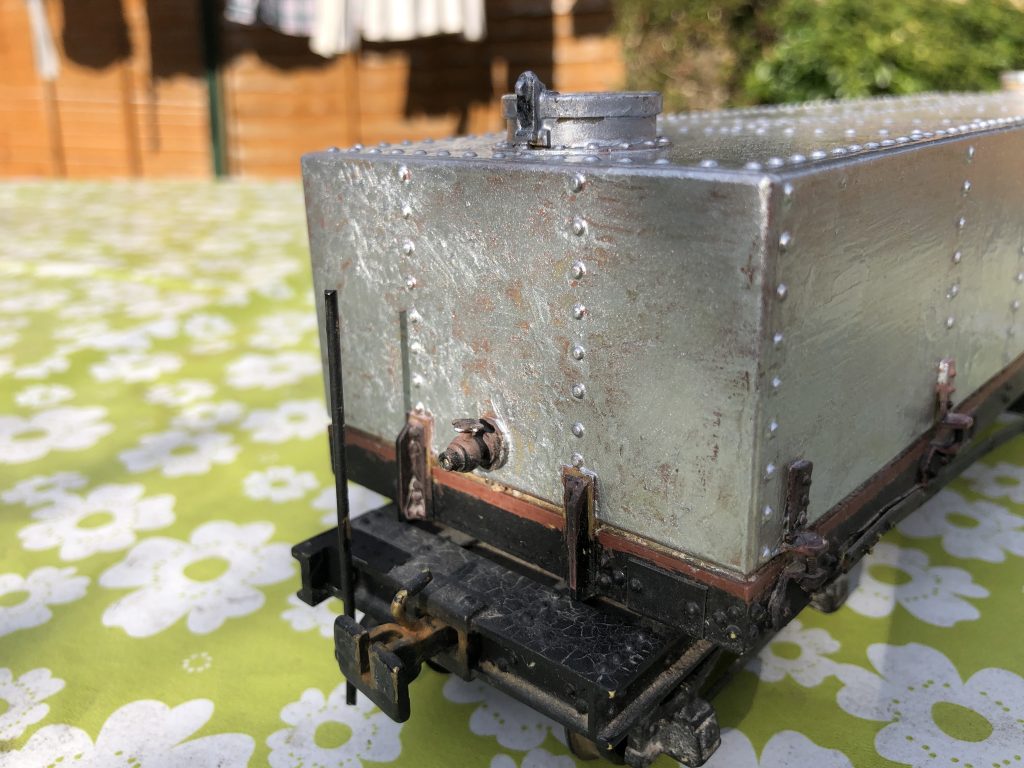The short version: don’t use car touch-up paints for large flat areas.
I bought a wagon for my garden railway a few years ago. I thought it was an oil wagon but it turns out to be a model of a World War One water-tank wagon. The real thing has been restored and is on the Apedale Railway Staffordshire. The model is produced by Swift Sixteen.
I was originally going to paint it black, and experiment with weathering techniques to make it look messy and oily. But when I realised it wasn’t an oil tank, I thought I’d try painting it to look like the real thing. How does one paint things in steel? The model itself was already built when I obtained it, so I can’t take it apart. It’s made of resin, and already had some brown paint on it.
This is my first attempt at painting with metallics. It involved a trip to Halfords. They sell touch-up paints for cars. I thought “if a car is nice and shiny, then this should be a breeze”. I was wrong. This stuff is meant for touching up scratches. It doesn’t do large areas neatly. The brush inside is tiny. I tried a wider brush, with better results, but I found that it softens existing paint underneath it, and I couldn’t clean the brush – not even with white spirit. I’ve now thrown away three brushes.

And this is what the results look like on the wagon. I’m not satisfied with this result. Time to reconsider.

So where did I go wrong? How does one paint metallics? What should I use instead? Watch this space.
